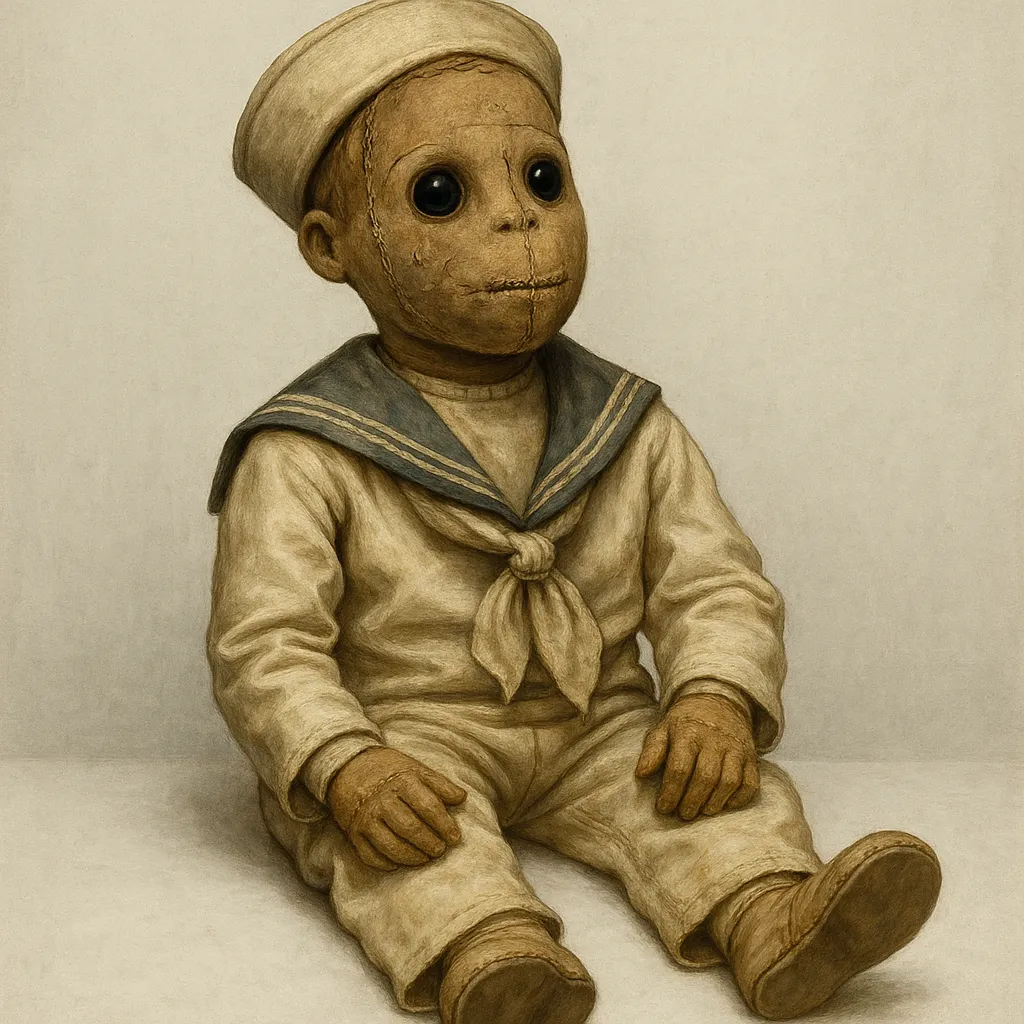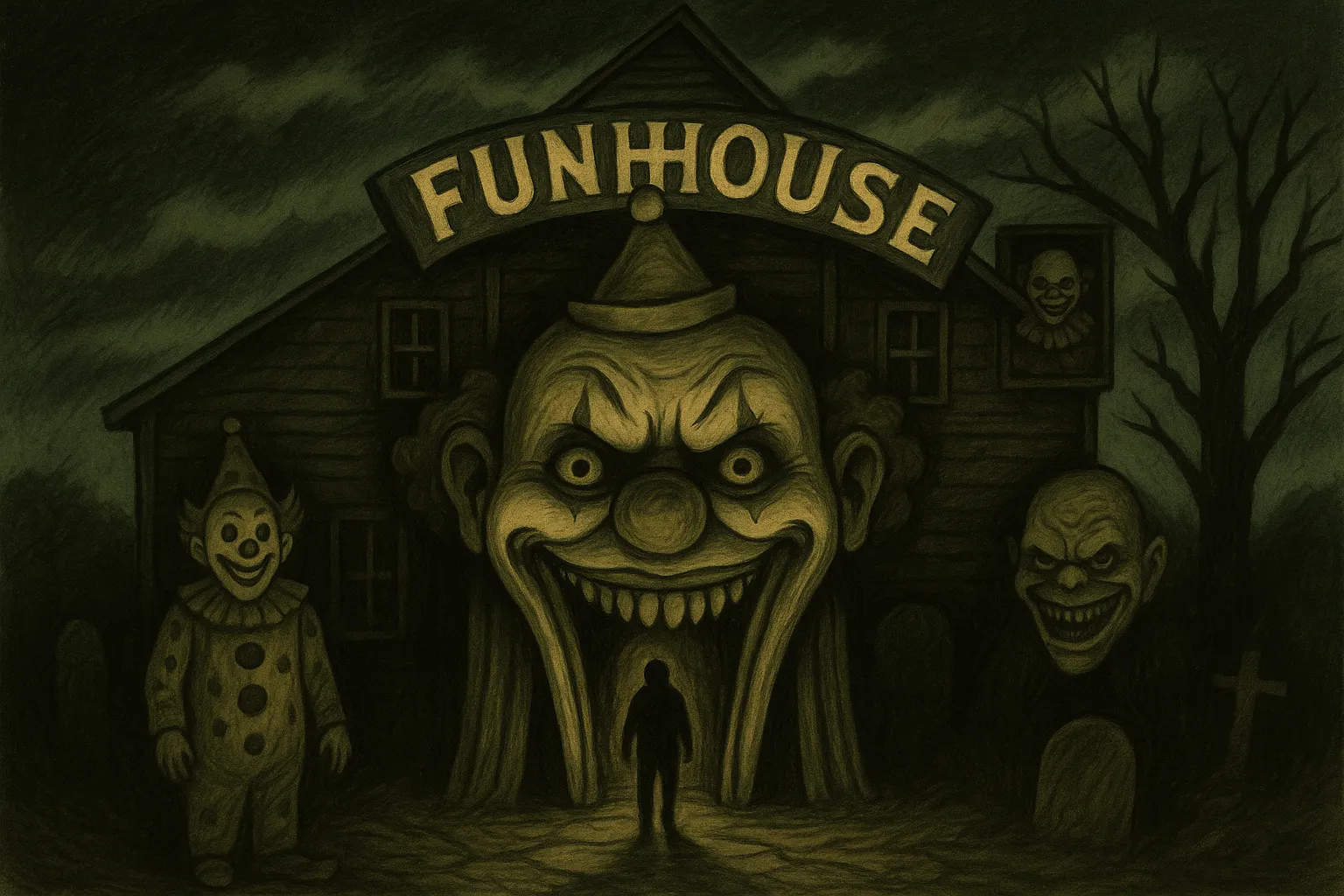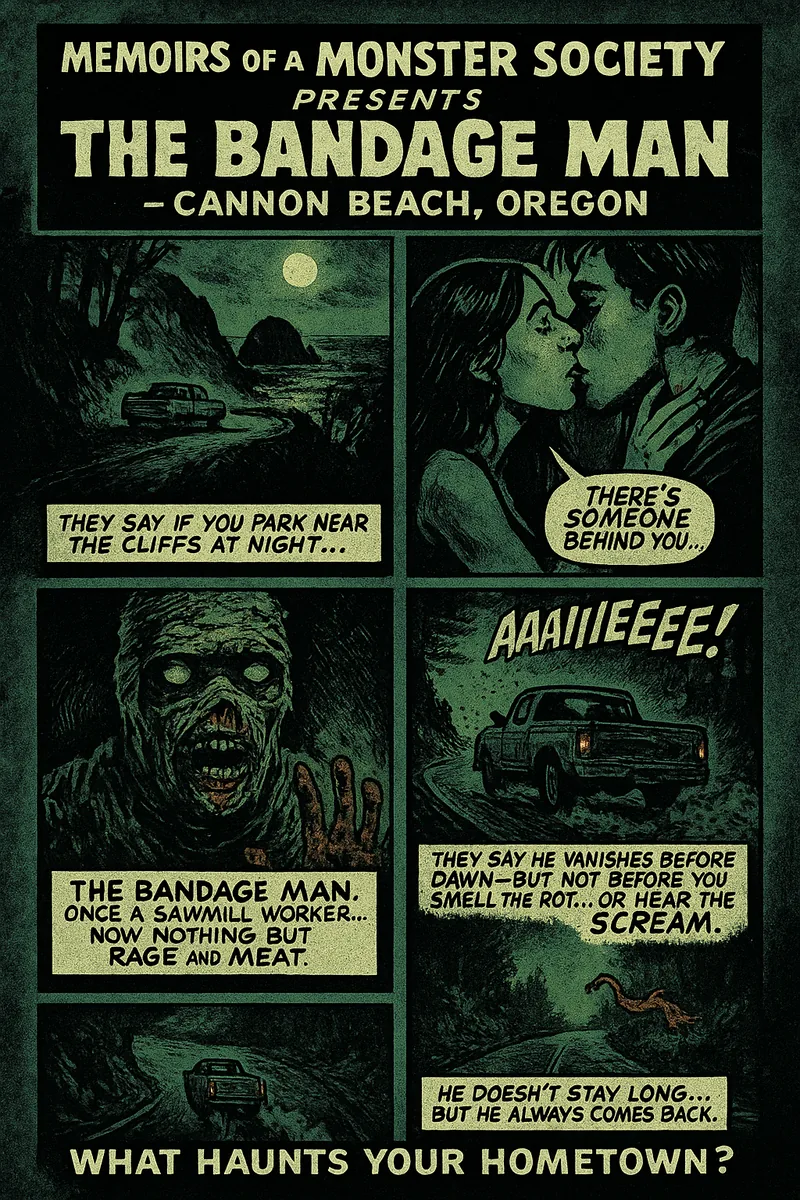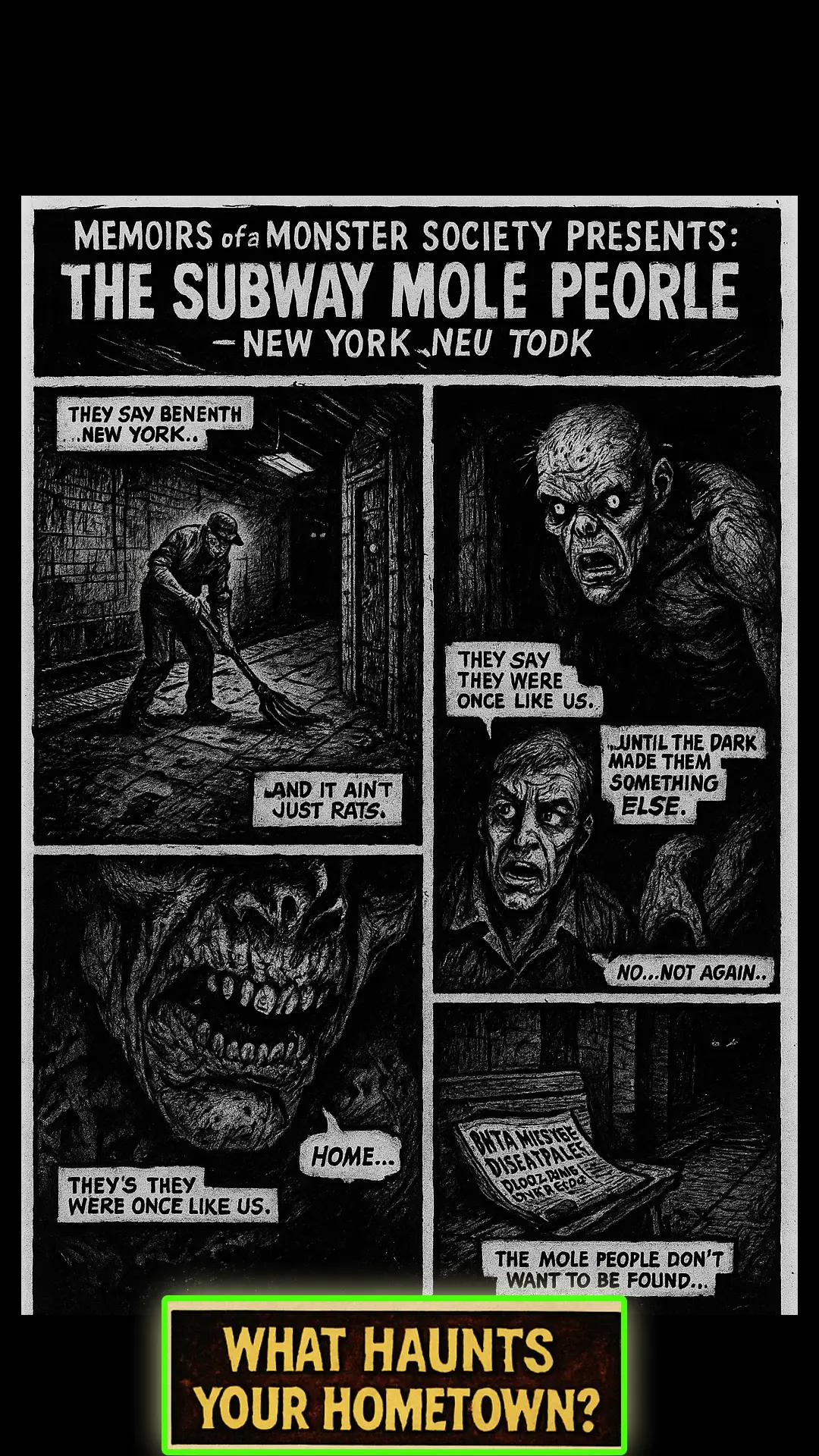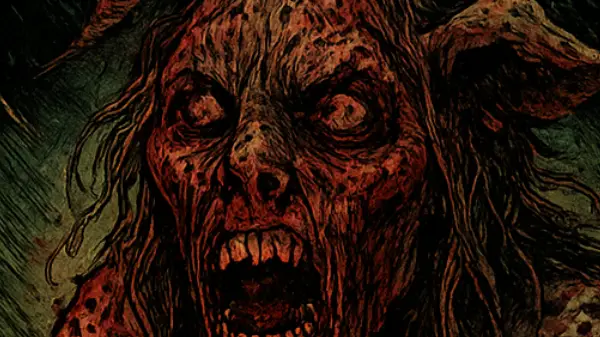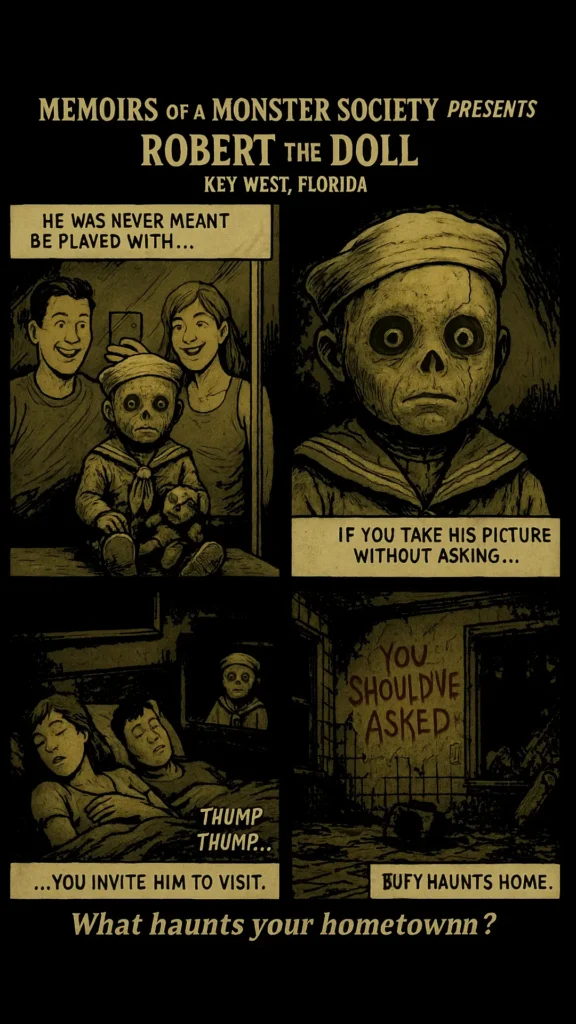
Robert the Doll sits behind plexiglass at the East Martello Museum in Key West, Florida. Ostensibly gifted to a young boy named Robert “Gene” Otto around 1904, the doll has become notorious for allegedly causing misfortune to those who photograph him without asking first. But is it real—or just a very elaborate myth? You decide.
Origins & Early Strange Events
- A German-made Steiff toy, Robert was purchased in Germany by Gene Otto’s grandfather and dressed in a sailor suit that Gene himself once wore.
- As Gene grew, he reportedly blamed household mishaps on Robert, even speaking of him in the first person. Family and neighbors began hearing eerie laughter, piano-playing from an empty room, or seeing the doll move windows around the house.
- After Gene’s death in 1974, the doll passed through several owners—one of whom recounted a child being terrorized by its apparent nighttime movement and attacks.
Robert’s Museum Life & the Photo Protocol
In 1994, the doll was donated to Fort East Martello Museum, where he sits inside a glass case. But the stories didn’t end.
According to museum lore and local legend, visitors must ask Robert’s permission to photograph him—otherwise misfortune may follow. Visitors and staff report camera glitches, blurred images, or strange mechanical failures that persist until the museum is exited.
Over 1,000 apology letters per year are apparently sent to Robert pleading forgiveness. Staff reportedly read them aloud in front of him. These letters—collected on walls next to the display—claim serious post-visit troubles: accidents, job loss, health issues.
Alleged Experiences & Paranormal Claims
- Ghost‑tour guides, staff, and visitors recount instances of Robert shifting positions, making giggling noises, tapping the glass from inside, or even throwing small objects across the room.
- Claimed misfortunes linked to the doll range from broken bones, car accidents, divorce, illness, and odd electronics failures.
- Not everyone endorses the supernatural side. Some say that asking permission “gives the doll power.” Others say they’ve taken photos without issue—but wouldn’t do it again.
Skeptics’ View & Plausible Explanations
Some argue that Robert’s legend has grown through folklore economics—its story fuelled by horror tourism, ghost tours, and viral lore.
Another angle? Human suggestion. If many visit believing in a curse, then coincidences—lost luggage, fender-benders—are magnified into proof. The “photo rule” may be performance art: guests follow tradition, and oddities become self-fulfilling folklore.
Pros & Cons of Believing
| Argument in Favor | Argument Against |
|---|---|
| Consistent apology letters and visitor testimonies | Marketability may fuel the myth |
| Reports of camera malfunctions and misfortune after disrespect | Some tourists report no effects at all |
| Staff and guides encourage respectful rituals | Confirmation bias likely plays a major role |
So… What Do You Think?
Does Robert have a supernatural edge? Is he some spirit-hungry voodoo vessel passed through generations? Or is it all a spooky marketing construct bolstered by human psychology?
I’ll leave it to you:
- Do you think those apology letters are genuine pleas—or part of the show?
- Would you ask permission before photographing a doll rumored to be cursed?
- Do shared misfortune stories point to a real curse—or just spooky coincidence?
There’s no definitive answer.
But if you ever visit Key West, a respectful nod, a quick “May I?”—and then a quiet “Thank you”—might keep your camera working and your life intact. All I know is some visitors swear by it… and I respect what I don’t fully understand.
Further Reading & Sources
- Wikipedia – Robert the Doll
- Burials and Beyond – The Curse
- Atlas Obscura – Story Behind the Doll
- RobertTheDoll.org – Apology Letters
- Ghost Tours Key West – Robert

